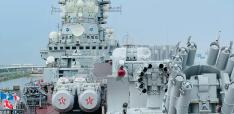The Culprit(s) of the New Cold War: US or China or Both?

Jianyong Yue contends that today’s U.S.–China Cold War is the product of structural miscalculations and missed strategic opportunities, rather than an inevitable clash of civilizations or ideologies.
The phrase “New Cold War” has become shorthand for the escalating tensions between the United States and China. Yet, while debate lingers over the term’s appropriateness, the more illuminating question is not whether this Cold War exists—but why it emerged and who bears responsibility for it.
In 2005, then–Deputy Secretary of State Robert Zoellick told Congress that since Nixon, seven U.S. presidents—Republican and Democrat alike—had pursued a shared mission: integrating China into the U.S.-led international system as a “responsible stakeholder.” The policy rested on a liberal conviction that economic interdependence would shape China’s behavior. In theory, engagement would replace containment; globalization would soften ideology.
It did not. The Trump administration denounced the strategy as a historic failure. The Biden administration’s 2022 National Security Strategy echoed that assessment, describing China as “the only competitor with both the intent and capability to reshape the international order.” Engagement had produced a rival rather than a partner.
But to claim the “responsible stakeholder” policy failed simply because China remained authoritarian misses the deeper point. The real failure was structural—a miscalculation of scale. U.S. policymakers assumed that the liberal order could accommodate a continental-sized economy within a framework designed only for “one or two Japans.” Yet, an empire-sized China, once industrialized, was bound to disrupt that order—geoeconomically and geopolitically—regardless of regime type.
The Limits of “Drawing China Out”
From the 1990s through the 2010s, U.S. strategy assumed that economic integration would produce political and strategic moderation. The expectation that China would become a “responsible stakeholder” underpinned WTO accession, investment liberalization, and broad engagement policies. In retrospect, this premise contained a structural blind spot.
The liberal order the U.S. sought to extend was oligopolistic: it could absorb only a handful of advanced economies organized around liberal institutions. It was not designed to integrate an empire-sized, semi-authoritarian economy whose industrial depth and demographic weight would inevitably reshape trade flows, technological ecosystems, and geopolitical influence. Integration was destabilizing: it deepened interdependence while creating power asymmetries that the institutional architecture could not mediate.
This miscalculation explains bipartisan unease in Washington. The Trump administration framed the failure transactionally—China had exploited openness. The Biden administration highlighted China’s structural power, viewing it as a greater destabilizing force on the liberal order than the former Soviet Union ever was.Both converge on a key point: U.S. institutions and geoeconomic arrangements lacked resilience to absorb China’s rise without friction.
Market Leninism and the Semi-Peripheral Trap
China’s rise produces insecurity as much as opportunity because of its internal trajectory—what can be termed market Leninism. Post-1989 reforms liberalized prices, privatized many state assets, and opened export channels, but without corresponding political pluralization. Economic growth fostered performance-based legitimacy, reinforced through export-led industrialization.
This model addressed immediate challenges—restoring legitimacy after Tiananmen—but created a structural predicament. Mass layoffs from nomenklatura privatization, rising inequality, and chronic underconsumption compelled reliance on external demand. WTO accession in 2001 secured markets but imposed strict commitments, constraining industrial policy and discouraging strategic, home-grown upgrading.
Economists such as Ha-Joon Chang have argued that the Washington Consensus-era multilateral trade order was “anti-developmental,” restricting tools like import substitution and active industrial policy—methods many latecomers used to catch up. Confronted with these limits, Chinese elites pursued a mixed strategy: aggressive integration where feasible, strategic circumvention where necessary—through state-sponsored acquisition, forced joint ventures, and occasional clandestine knowledge transfer. These measures were defensive tactics by a polity powerful in scale but fragile in technological autonomy.
The result is a semi-peripheral development pattern: China is simultaneously the world’s largest manufacturer and technologically dependent in critical high-end domains. This duality generates chronic anxiety in Beijing and strategic alarm in Washington.
Made in China 2025 and the Politics of Desperation
The Made in China 2025 initiative reflects constraint rather than pure ambition. It is a policy born of urgency: an attempt to escape technological dependence before decoupling hardened. Beijing sought leadership in semiconductors, robotics, and AI as a safeguard against strategic strangulation.
But scarcity-driven policy is inherently destabilizing. One power’s near-autarkic pursuit in critical technologies triggers defensive responses from others. The United States, with its open markets and innovation ecosystems, interpreted industrial planning and subsidies as challenges to the liberal order. Tariffs, export controls, and investment screenings ensued—reviving the political logic of containment.
Domestic policy aimed at structural security thus became a catalyst for geoeconomic confrontation. The clash is less ideological than structural. It reflects two systems wrestling over who sets the rules for technology, capital, and data in a globally integrated yet institutionally underprepared world.
Pivotal Missed Opportunity: Korea
Responsibility also lies in foregone opportunities. Between roughly 2012 and 2018, Beijing had a favorable window to cooperate with Washington over Pyongyang’s nuclear program. Transactional incentives—policy space and reduced coercion—were offered in return for decisive Chinese pressure. Beijing hesitated.
As I argued in my earlier essay, Lost Opportunity: How the North Korean Nuclear Crisis Triggered a New Cold War Between China and the United States, China’s caution and alignment with Pyongyang closed that window. The consequences were profound: China’s credibility as a regional stabilizer suffered, while the U.S. domestic consensus hardened toward strategic competition. The Korean episode exemplifies how tactical choices, layered over structural fault lines, produce strategic inflection points whose impact outweighs immediate causes.
Shared Misjudgments and the Logic of Escalation
The new Cold War is not a simple tale of one culprit. It is an interaction effect: U.S. misreading of systemic absorptive capacity; Chinese misreading of U.S. resilience and intent. Washington overestimated the liberal order’s transformative power; Beijing overestimated scale as a substitute for systemic equivalence. Both misjudgments propelled policies toward separation rather than accommodation.
This feedback loop is self-reinforcing. U.S. tariffs, export controls, and alliances push China toward self-reliance. Chinese subsidies, technology nationalism, and assertive diplomacy validate U.S. fears. Each step is rational individually, but collectively they drive structural drift toward bifurcation.
Responsibility, Asymmetry, and the Possibility of Reversal
Shared responsibility is not moral equivalence. Constraints and capacities differ. The United States bears responsibility for promoting an integration model without mechanisms to manage a non-liberal behemoth. China bears responsibility for coercive and self-protective policies that accelerated decoupling and eroded trust.
Yet, the Cold War logic is not immutable. Structural pressures exist, but policy choices matter. Reversal would require three shifts:
- Washington must pair competition with selective institutional creativity, reducing zero-sum incentives in critical domains.
- Beijing must recognize that seeking absolute technological sovereignty is costly and self-defeating; measured cooperation on shared risks—climate, pandemics, proliferation—would yield durable dividends.
- Third parties—Europe, Japan, India, and global institutions—must enlarge space for non-zero-sum outcomes by anchoring selective multilateralism.
Conclusion: Mistakes that Made a New Cold War
The new Cold War did not descend from inevitability. It emerged from concrete choices and structural frictions:
- A liberal order that underestimated scale;
- A semi-peripheral developmental model that bred technological insecurity;
- Tactical decisions—most notably around North Korea—that closed cooperative exits.
Both Washington and Beijing are culpable, though asymmetrically. Recognizing shared responsibility is not rhetorical—it is practical insight for mitigation.
Understanding culpability matters for designing remedies. Policymakers wishing to avoid protracted systemic bifurcation must address both the liberal order’s institutional limits and the developmental anxieties driving techno-nationalist reflexes. Only by treating the problem as structural—and therefore tractable—can the two largest powers imagine a different strategic architecture.
Treating these challenges as structural—and therefore solvable—offers the only path toward avoiding a protracted bifurcation and realizing a more stable, cooperative international order.
Author’s Note: This essay is written in the conviction that the origins of the new U.S.–China Cold War cannot be reduced to ideology, regime type, or national ambition. They lie, instead, in structural misjudgments—shared, asymmetric, yet ultimately human. To understand these mistakes is not to exonerate; it is to clarify the conditions of recurrence.
As scholars and citizens, we owe history more than accusation. The purpose of analysis is not to take sides, but to reveal the anatomy of failure that made confrontation appear inevitable. Only by tracing how choices became structures—and how structures hardened into destiny—can we begin to imagine an alternative future.
In this sense, this essay is less a verdict than a warning: that the next Cold War, like the last, will not be won by triumphalism, but perhaps only survived by self-reflection.
Jianyong Yue is a visiting fellow at the London School of Economics and previously taught Chinese politics and development at King’s College and LSE. He published China’s Rise in the Age of Globalization: Myth or Reality (Palgrave Macmillan, 2018) and Crony Comprador Capitalism: The Institutional Origins of China’s Rise and Decline (Palgrave Macmillan, 2024).
Photo by Maksim Romashkin


